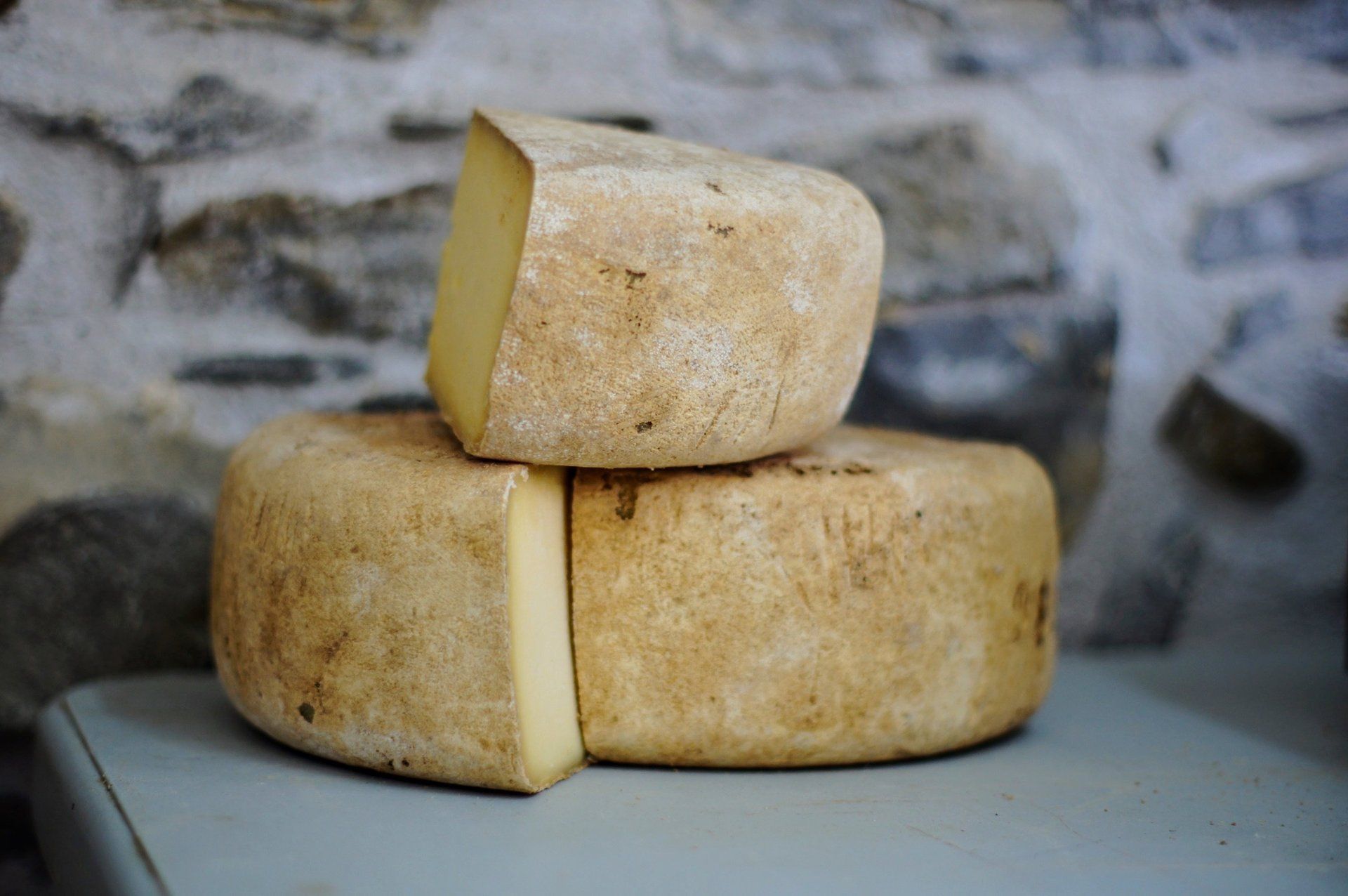Why Cheese is so Addictive
April Ritchotte • August 20, 2020
The Addiction of Cheese

Cheese is my weakness. The Brie. It got me.
It’s OK. Thanks for asking. I’m back on the bus today, but it made me think of everyone else who may share my cheese addiction or have compliance issues when they make decisions to stop eating dairy, but find it hard to follow through.
What is it about cheese that makes it so dang addictive?
Three words: SALT. FAT. CASOMORPHINE.
Fat, salt, and sugar are the usual suspects when it comes to our food addictions. Our neurological pathways change once we’ve had a taste.
There’s a reason why you pass your food of choice – pizza, M&M’s, cheese, chips, ice cream – multiple times, but then ultimately give in.
When did it start? It may have happened to you at your first birthday party. You’ve all seen it. Mom forced chocolate cake into your mouth while Grandma clapped for you. And that was it.
Your virgin palate got exposed to fat and sugar, your brain’s pleasure centers lit up as if you’d been given cocaine, your neurological pathways were forever altered, and the clapping further reinforced a pull to sugar that you probably still battle today.
Thanks Grandma.
But that aside, cheese has a special breed of neurotoxin that not only causes addiction, but also inflames the body and creates a histamine response. It’s called CASOMORPHINE.
So while I’d love to lay on a bed of Gouda while someone sprinkles goat cheese on me (yes- my love of cheese is deep), I understand why. It’s basically a drug. And because of this, I have to continually find substitutions in my diet where cheese used to be, and also not have it laying around.
It makes sense. Casomorphine helps a baby calf mellow out when nursing from mom. It's nature's way of saying, “Yeah - you like that? Come back at the next feeding time little one...” Since cows don’t pull babies out of their cribs at feeding times and put on soft soothing music while getting them to latch, Mother Nature gave cows a little edge to get their babies coming back:
(1) animal instinct and
(2) a drug-like substance in their milk to keep them coming back for more: a la, casomorphine.
And here we are, the only species who drinks the milk of another animal after being weaned from our own mothers - eating cheese and consuming dairy at a higher rate in the USA than any other nation.
And what do we get for it? We get a concentrated version
of casomorphine in our dairy making it uber addictive. But that’s not all.
We also get a full array of hormones needed to build a several hundred-pound cow, higher igF levels that spur cancer, a non-absorbable form of calcium (no you don’t need dairy to build strong bones), plus higher levels of inflammation, acidity, and histamine in our bodies. Yay us!
Spread it, sprinkle it, melt it, cube it. Cheese. I get it.
But it’s not meant for you. It’s not good for you. It’s inflammatory. It creates a histamine response. It contributes to high cholesterol levels. It promotes acne. It will impede your weight loss progress. And it will put a hold on you like a drug, only it’s legal in all states and disguised in the wrappings of a cracker.
How do you beat the addiction?
Well, if you go cold turkey, expect to feel a little withdrawal both physically and emotionally. What will you sprinkle on your salad? How will you make a lettuce wrap or sandwich without it?
But you’ll live. Longer, I might add. Know that eventually that you will lose your flavor for it, and there are many great substitutions that have a cheese-like taste. Nutritional yeast and cheese sauces made with cashew or other nuts are a great starting point to create viable substitutions.
If you don’t feel strong enough to go cold-turkey, cut it way down. For the love of God, stop drinking milk.
• Replace cow’s milk and creamer with plant-based milks like almond, oat, cashew, or rice.
• Eliminate all other cow cheese and switch to goat cheese which is slightly easier to digest.
• Use crumbles or shreds on occasion versus blocks or sliced cheese because a little will go a long way.
Then, while you are cutting down, try new recipes. Dairy-free spinach-artichoke dip. Cheese-free flatbreads. Spread avocado on a sandwich or wrap instead of cheese. Use spices and herbs to flavor foods.
Once you get over your physical addiction, you may just get addicted to your clear skin, slimmer waistline, improved cholesterol levels, and knowledge that in the end, it is really only the baby cows that needed the dairy after all.
For non-dairy recipes, visit my website at www.aprilritchotte.com


